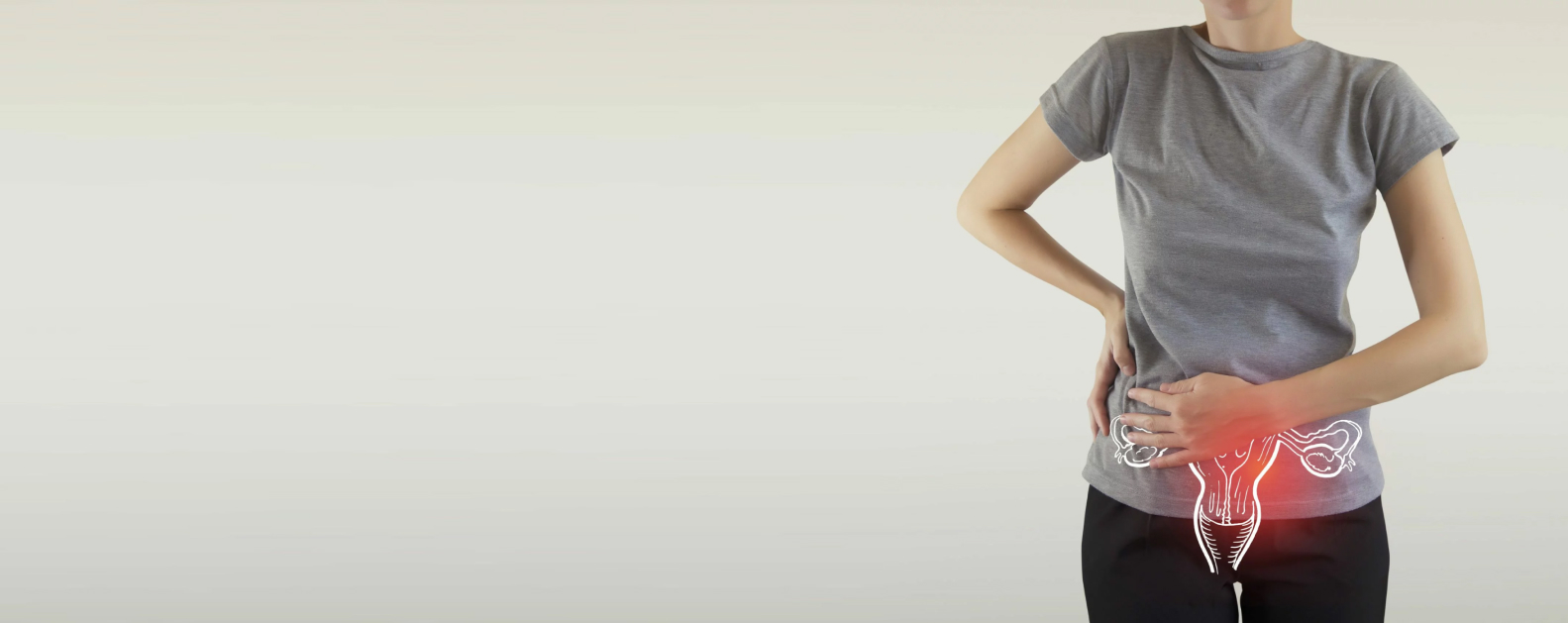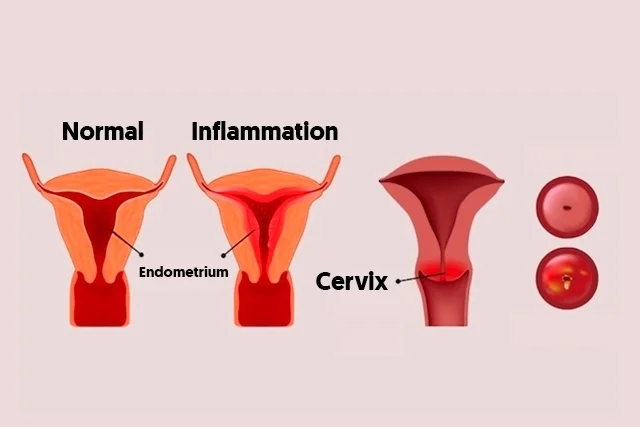I. Introduction
Definition of Painful Menses:
Cramps or discomfort in the lower abdomen, often known as dysmenorrhea, are common in the days leading up to and during menstruation. The pain might be somewhat uncomfortable or it can be so intense that it renders the sufferer bedridden. Besides the obvious backache, you could also experience dizziness, nausea, headaches, and exhaustion.
Prevalence of Painful Menses:
Painful menses is known to be a very common condition that has different prevailing rates depending on the person. Primary dysmenorrhea is much more prevalent among young women, influencing a specific portion of the population. However, secondary dysmenorrhea often happens by some underlying situations that occur in all ages of women.
Impact of Painful Menses on Quality of Life:
A woman’s quality of life may be severely diminished by painful menses. Menstruation-related pain and discomfort may have a negative impact on a person’s mental and physical health. This has the potential to influence one’s day-to-day life, interpersonal connections, and professional life.
II. Causes of Painful Menses:
1. Uterine Fibroids:
Fibroids of the uterus are benign tumors that may form there. Fibroid size, quantity, and position all have a role in how painful menses may be. The fibroid uterus causes an elevation in the intensity and duration of menstrual cramps by stimulating the uterus to contract more often.
2. Endometriosis:
In endometriosis, tissue similar to the uterine lining (endometrium) grows in places other than the uterus. This might include the ovaries, fallopian tubes, or other pelvic organs. Secondary dysmenorrhea is often brought on by this aberrant tissue development, which may make menstruation very painful.
3. Uterine Infections:
Menstrual pain and inflammation may be brought on by uterine infections like PID. Sexually transmitted illnesses and bacterial infections that have spread up from the lower vaginal tract are the most common causes of these infections.
4. Prolapsed Uterus:
When the uterus slips down into or out of the vagina, the condition is known as prolapse. The prolapsed uterus causes Irritation and discomfort during menstruation, as are other symptoms including a feeling of pressure or the impression that something is leaving the vagina.
III. Symptoms of Uterine Infection:
There is a wide range of symptoms associated with uterine infections. Common symptoms of uterine infection include:
1. Abnormal Vaginal Discharge:
Changes in vaginal discharge may indicate a uterine infection. Increased output, changes in color or consistency, or an unpleasant odor are all things you could notice.
2. Pain During Sexual Intercourse:
Uterine infections are a common source of discomfort for sexually active women. Discomfort during pregnancy might be localized to the uterus or experienced systemically.
3. Painful Urination:
Urinary Tract Inflammation and irritation caused by a uterine infection may make urinating uncomfortable or painful. A burning feeling or an urgent desire to urinate might occur.
4. Fever:
Fevers are a common symptom of uterine infections. A persistent fever may be an indication of a more serious illness that needs prompt medical attention.
IV. Symptoms of Painful Menses:
1. Menstrual Cramps:
Cramps during menstruation are a common source of discomfort for many women. Lower abdominal spasms or contractions may be periodic or constant during menstruation. Cramp pain may range from mildly unpleasant to very painful for different people.
2. Lower Abdominal Pain:
Women who suffer from terrible menstruation may also endure lower abdomen discomfort or generalized soreness in addition to cramps.
3. Back Pain:
Lower back discomfort is a common symptom among women who endure painful menses. Pain in this area might originate in the lower back and spread to the quadriceps.
4. Headaches:
Menses pain has been linked to a variety of headache types, including tension headaches and migraines. Migraines like these, which may strike a woman before or during her period, can be very painful and significantly lower her standard of living.
V. Diagnosis of Painful Menses:
1. Medical History:
In order to determine the cause and extent of severe menstruation, a thorough medical history is required. The doctor will want to know more about the pain, when it started, how long it lasted, and what other symptoms you’ve seen.
2. Physical Examination:
A pelvic examination allows for the testing of reproductive organs such as the uterus, ovaries, and fallopian tubes. They will feel for any anomalies or painful spots, as well as any signs of infection.
3. Imaging Tests:
Imaging methods may be suggested for additional evaluation of the pelvic organs in specific cases. Imaging techniques, such as transvaginal ultrasonography, may be useful in the detection of gynecological disorders such as endometriosis, uterine fibroids, and structural abnormalities.
VI. Treatment of Painful Menses:
1. Pain Medication:
Menstrual cramps and period pain may be alleviated by over-the-counter pain medicines including nonsteroidal anti-inflammatory drugs (NSAIDs).
2. Hormonal Birth Control:
Hormonal birth control options like the hormonal IUD or progestin tablets can help regulate the menstrual cycle and lessen the pain of painful periods, as can the use of combined oral contraceptives (birth control pills) or progestin-only contraceptives.
3. Surgery for Uterine Fibroids or Prolapsed Uterus:
Menstrual discomfort may be alleviated with surgery if uterine fibroid treatment or a prolapsed uterus is to inculpate. In certain cases, surgical correction of the prolapse or myomectomy (the removal of fibroids) may be necessary.
VII. Prevention of Painful Menses:
Even though you can’t always prevent menses pain, there are steps you may do to make it more bearable. Some precautions to take include:
1. Exercise:
Exercises like yoga and aerobics practiced on a regular basis have been shown to enhance cardiovascular health, reduce inflammation, and boost general well-being. If you exercise regularly during your menstrual cycle, you may have less pain and discomfort.
2. Stress Management:
Symptoms of menstruation, such as cramping, may be made worse by stress. Reducing stress via practices like meditation, deep breathing exercises, or other relaxation-inducing activities may help alleviate painful menses.
3. Proper Nutrition:
Having less unpleasant menstrual symptoms is one benefit of eating a healthy, balanced diet that emphasizes whole foods, fruits, vegetables, and lean meats. Hydration is also important for overall health during menstruation.
VIII. Fibroid Uterus:
Definition and Causes of Fibroid Uterus:
Uterine fibroids, sometimes called uterine leiomyomas, are benign growths that develop from the uterine muscle. These tumors develop from smooth muscle and range widely in terms of size, number, and location. Although the exact etiology of fibroids is uncertain, hormone imbalances, genetics, and elevated estrogen levels are all suspected contributors.
Treatment Options for Fibroid Uterus:
The intensity of symptoms, the size and location of the fibroids, and the goal for future fertility all play a role in determining the best course of therapy for a fibroid uterus. Some potential forms of treatment are:
1. Medications:
Some drugs, such as hormonal contraceptives and gonadotropin-releasing hormone (GnRH) agonists, may reduce the size of fibroids and alleviate their associated symptoms.
2. Noninvasive Procedures:
Treatments that aim to shrink or remove fibroids without cutting into the body include embolization of the uterine artery,Microwave ablation of fibroid and targeted ultrasound guided by magnetic resonance imaging.
3. Surgical Interventions:
Myomectomy and hysterectomy are two surgical treatments that could be performed for more severe instances or when fertility is not a concern. A hysterectomy removes the uterus in its entirety, whereas a myomectomy removes fibroids while leaving the uterus intact.
IX. Conclusion:
In order to enhance the quality of life and ease symptoms, it is crucial to seek therapy for painful menstruation. Recognizing that endometriosis, uterine fibroids, and uterine infections may all contribute to uncomfortable menstruation is crucial. If women get medical help right away, doctors will be able to accurately diagnose their condition and provide them with alternatives for therapy that will meet their needs.
It’s crucial that women advocate for themselves by bringing up their symptoms to doctors and getting the help they need. Early diagnosis and proper treatment may greatly improve the quality of life for those who suffer from painful menstruation. Always keep in mind that there are trained medical experts accessible to answer your questions and provide guidance. Seek urgent medical assistance if you suffer from painful menstruation or other menstrual difficulties, and take steps to find relief and enhance your health.





